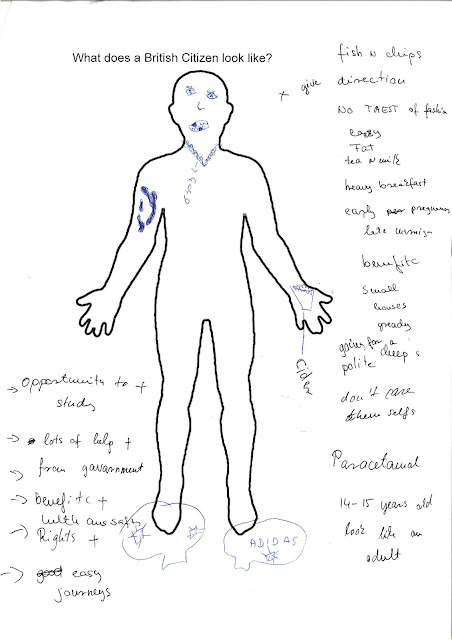Like most teachers, by the end of the year I generally require the services of a team of industrial archaeologists to sift through the varying strata until the desk surface is reached. However, thanks to two moves of office location in as many years, each of which involved boxing LOTS of stuff up and conflating the debris of desks in two locations, this supposedly annual process had been delayed until this year. You can probably imagine the towering bundles of dreck, clouds forming at their pinnacles, while seabirds try to nest amid bundles of yellowing homework and unused photocopied resources. Well, after calling in Time Team, and then setting the braziers burning, I have been left with a desk that looks more like a working space, plus neatly organised resources and a few choice samples of student work, all ready for the September onslaught, when paper will once more accrue on on my desk faster than autumn leaves in a storm.
So what the hell has this got to do with the title of this post? I thought I'd share a sample of the aforementioned student work with you. When I'm wearing my ESOL teacher hat, I have to include the topic of Citizenship in the class work, as this is a requirement of ESOL classes in FE - it means that students learn about stuff like MPs, Human Rights, the UK legal system, a bit about history, and generally practical stuff that helps them live here. And because they study it over the course of a year, it means that they don't have to do the ghastly citizenship test, an exam that would ensure about 70% of the native population were kicked out of the country, so obtuse it is.
One of my first Citizenship lessons is a discussion about what it means to be a British citizen. This is a very useful exercise, because it means students can discuss stereotypes, habitual behaviour, and differences between life in their own countries and here - linguistically and thematically a very rich seam. I get students into working groups initially to discuss some questions on a worksheet, then lead a whole class feedback. After this, I give groups a sheet. On this sheet is an outline of a human body, and the question, 'What does a British citizen look like?' I then instruct the students to work in their groups and draw what they think a British citizen looks like and write a few phrases.
Now, the whole idea of this is that it's meant to show that British citizens come in all shapes and sizes, that there's no such thing as a 'typical' citizen, that it doesn't matter where you're from, that we are a pluralistic, cosmopolitan society that can rise nobly above crude stereotypes and see The Person Within.
Do you think that is what the students had in mind as well?
Oh dear, no. Instead, most students end up drawing and describing what they think a typical native British person looks like. Here are a few:
 |
| OK...not too bad... |
 |
| well, at least this one's polite... |
 |
| Hmm - Reading town centre on a friday night |
 |
| WHAT? |
 |
| ! |
No comments:
Post a Comment